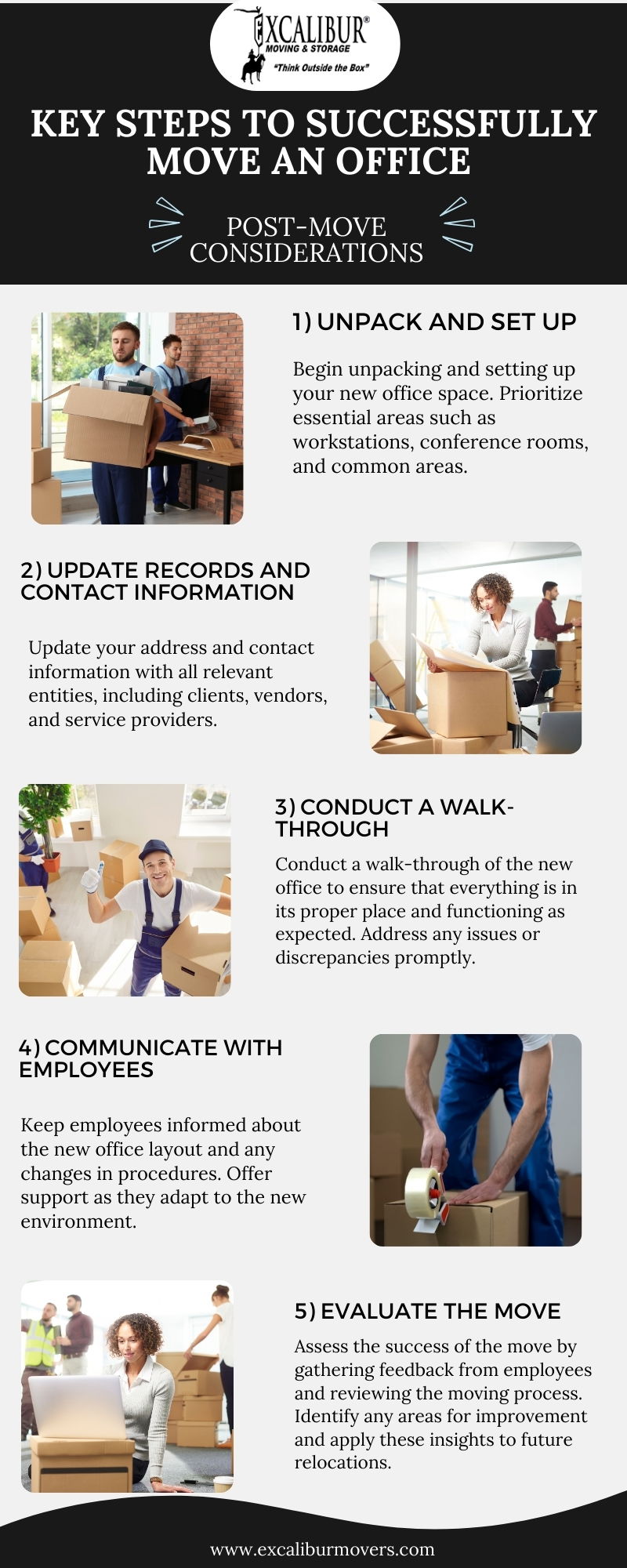The Key Steps to Successfully Move an Office in Los Angeles
Office relocations in Los Angeles can be both an exciting and challenging endeavor. As one of the largest and most dynamic cities in the United States, Los Angeles offers numerous opportunities for businesses but also presents unique logistical hurdles. This comprehensive guide will cover essential considerations, best practices, and tips for managing an office move in Los Angeles, ensuring a smooth transition with minimal disruption to your operations.

Understanding the Scope of Office Moving
Office moving involves more than just packing and transporting furniture. It encompasses a range of activities including logistics planning, inventory management, and ensuring business continuity. To effectively manage an office move, it's crucial to understand the various components involved:
Planning and Strategy: Develop a detailed moving plan that includes timelines, budget, and key milestones. This plan should also account for potential risks and challenges, providing strategies to mitigate them.
Inventory Management: Conduct a thorough inventory of all office equipment, furniture, and supplies. This helps in determining what items will be moved, what needs to be replaced, and what can be discarded.
Logistics Coordination: Coordinate the logistics of the move, including transportation, packing, and unpacking. This involves scheduling and managing the movement of assets while minimizing downtime.
Pre-Move Preparations
Effective preparation is key to a successful office moving Los Angeles. Here’s how to get started:
Assemble a Moving Team: Form a team to oversee the move. This team should include representatives from different departments to address specific needs and concerns.
Develop a Moving Checklist: Create a detailed checklist to ensure that all aspects of the move are covered. This checklist should include tasks such as notifying clients and vendors, updating contact information, and arranging for IT support.
Notify Stakeholders: Inform all stakeholders, including employees, clients, and vendors, about the move well in advance. Provide them with updated contact information and expected dates for the transition.
Hire Professional Movers: Research and hire a professional moving company experienced in office relocations. Ensure they are familiar with the complexities of moving in a city like Los Angeles.
Packing and Labeling
Packing is a critical part of the moving process. Here are some tips to ensure that everything is packed efficiently and safely:
Sort and Declutter: Before packing, sort through office items and declutter. Dispose of outdated documents, broken equipment, and any unnecessary items.
Use Quality Packing Materials: Invest in high-quality packing materials such as bubble wrap, packing peanuts, and sturdy boxes. This helps protect your office assets during transit.
Label Everything: Clearly label all boxes and containers with their contents and destination location within the new office. This will make unpacking much easier and more organized.
Secure Sensitive Items: Ensure that sensitive documents and valuable items are packed securely. Consider using specialized containers for items like computers and electronic equipment.
Logistics and Transportation
Transportation is a major component of office moving. Managing this effectively involves:
Plan the Route: Plan the route from the old office to the new location. Consider traffic patterns and potential roadblocks in Los Angeles, and schedule the move during off-peak hours to minimize delays.
Coordinate Loading and Unloading: Coordinate the timing for loading and unloading to ensure that everything is done efficiently. This involves working closely with the moving company to align schedules.
Transport IT Equipment: Ensure that IT equipment is handled with care. Use specialized movers for servers, computers, and other electronic equipment to prevent damage.
Post-Move Considerations
Once the move is complete, there are several post-move tasks to address:
Unpack and Set Up: Begin unpacking and setting up your new office space. Prioritize essential areas such as workstations, conference rooms, and common areas.
Update Records and Contact Information: Update your address and contact information with all relevant entities, including clients, vendors, and service providers.
Conduct a Walk-Through: Conduct a walk-through of the new office to ensure that everything is in its proper place and functioning as expected. Address any issues or discrepancies promptly.
Communicate with Employees: Keep employees informed about the new office layout and any changes in procedures. Offer support as they adapt to the new environment.
Evaluate the Move: Assess the success of the move by gathering feedback from employees and reviewing the moving process. Identify any areas for improvement and apply these insights to future relocations.
Additional Tips for Moving in Los Angeles
Moving an office in Los Angeles presents unique challenges due to the city’s size and traffic. Here are some additional tips to help navigate these challenges:
Plan for Traffic: Los Angeles is known for its traffic congestion. Plan your move during off-peak hours to avoid delays. Consider using moving services that offer flexible scheduling to accommodate traffic patterns.
Obtain Permits if Needed: Depending on the location of your new office, you may need to obtain permits for parking or loading/unloading zones. Check with local authorities to ensure compliance.
Consider Security: Los Angeles is a bustling city with a variety of security concerns. Ensure that your new office is equipped with adequate security measures, including alarms and surveillance systems.
Stay Informed: Stay informed about any city-specific regulations or requirements that may impact your move. This includes understanding local zoning laws and building regulations.
Office moving in Los Angeles involves careful planning, coordination, and execution. By following the guidelines outlined in this guide, you can ensure a smooth transition to your new office space. Remember to involve your team, communicate effectively with stakeholders, and address any challenges proactively. With proper preparation and management, your office move can be a successful and positive experience for your business.
